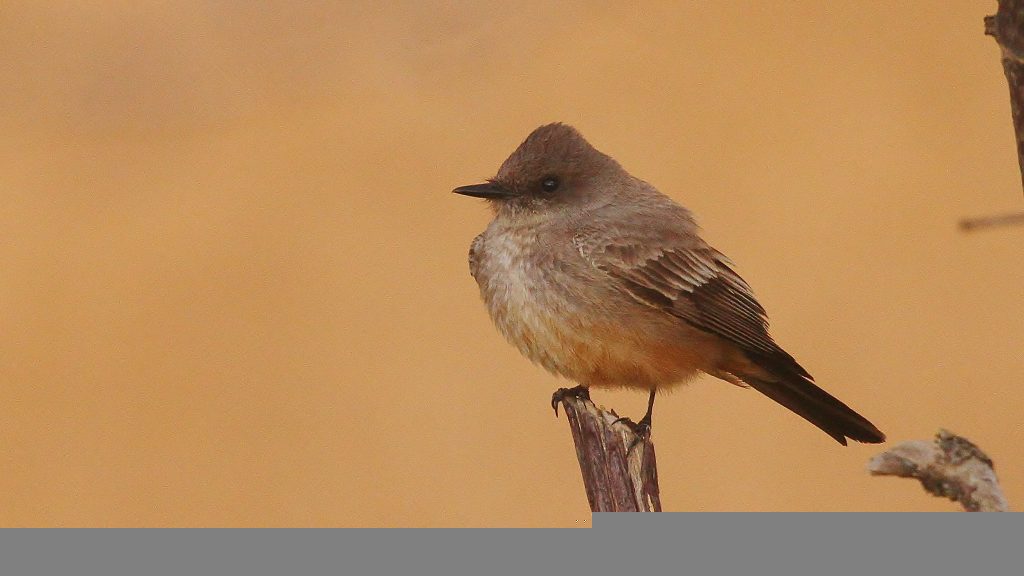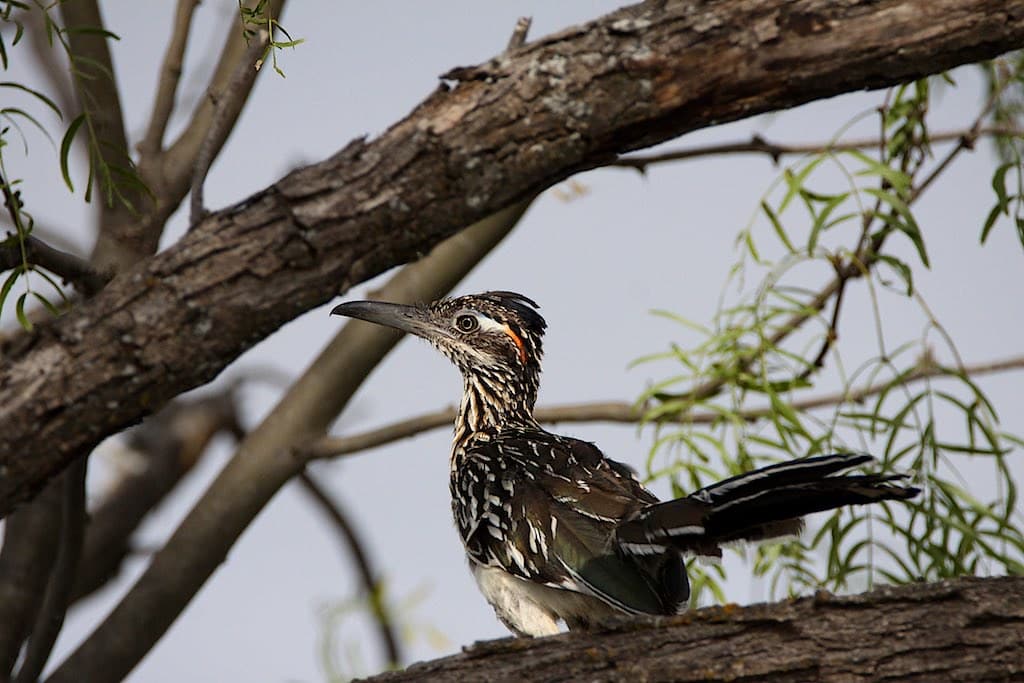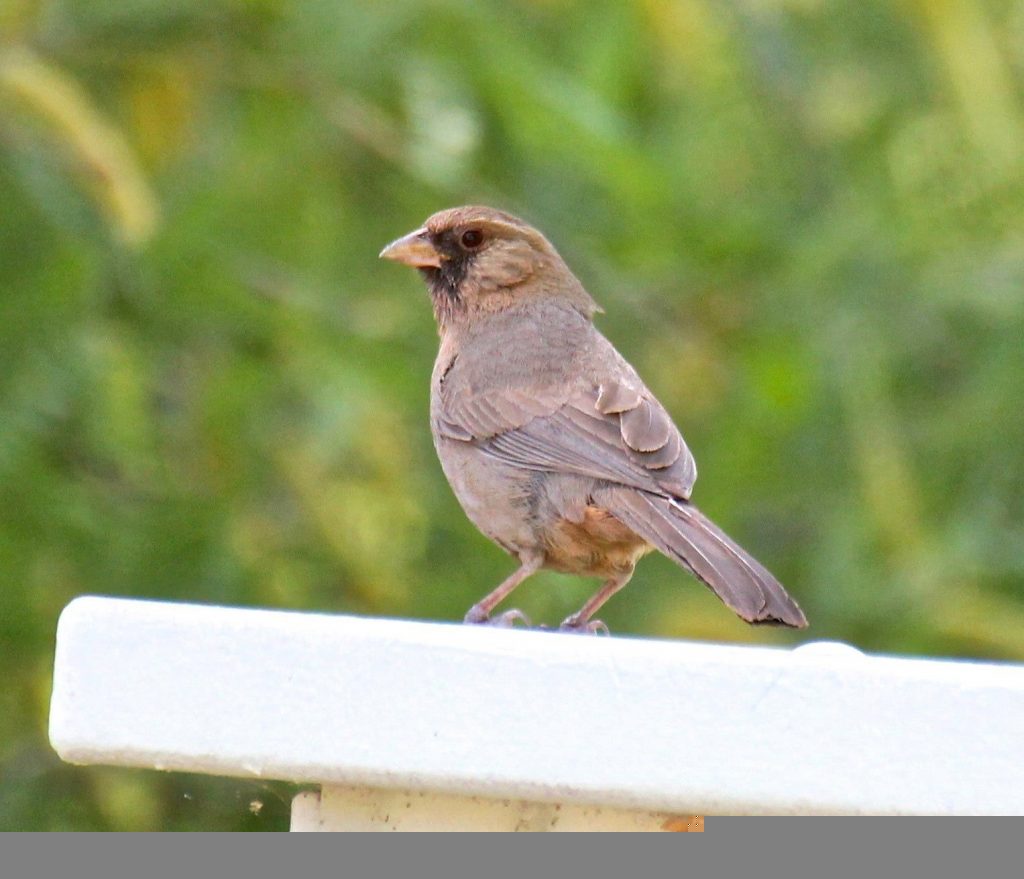Palm Springs and the Salton Sea: Reflections
By Marjorie Powell
If you’d like to begin planning your 2021 outings or want to jump-start next year’s eBird list, consider joining the GGBA birding trip to Palm Springs and the Salton Sea, by Nature Trip. This past January, eight birders (including me!) joined the two guides, Eddie Bartley and Noreen Weeden, to look for birds in this area east of Los Angeles. Eddie and Noreen planned 5 days of birding, including the afternoon of our arrival day and the morning of our departure day.
We visited varied habitats, upland forest, desert, shoreline, and saw many of the birds that nest there, or visit for all or part of the winter, as well as one rarity. Several of us saw life birds during the week.

The Salton Sea is California’s largest inland lake and one of the important saline lake ecosystems, supporting large portions of some bird species in the winter. Audubon California is heavily involved in efforts to restore habitat and improve the environment at and around the Salton Sea for birds and humans.
As the Sea gets less and less water from the Colorado River and agricultural run-off, the lake is drying up and getting saltier. It’s now too salty to support many fish, so fewer fish-eating birds like American White Pelicans winter there. Currently bird species that eat insects that can survive in saltier water, such as Bonaparte’s Gulls, are wintering at the Sea. As marshlands at the edge of the Sea are created or restored, they support increasing numbers of birds for all or a portion of the winter and in migration.

Eddie Bartley, of Nature Trip, described how they came to run this tour for GGBA: “We began visiting Palm Springs area in the late 80s when a friend moved there, then a couple of more friends moved to Joshua Tree in the late ‘90s. Soon we were going each winter for a week or two to visit and bird -especially the Sea. We did several birding tours for out of state and international Nature Trip guests and quite a few Bay Area friends asked about birding down there so, starting about 2014 we offered GGBA field trips in non-consecutive years. It was long way to go for folks for a few days though so we would share a list of favorite places and routes. In 2017 GGBA asked us if we could make it into a big trip but our first GGBA mini-Big Trip wasn’t until 2019. This trip was our second time for the GGBA Travel group.
This year we drove down and, after nice diversions along the way south, we arrived 5 days before meeting the group staying at a nice rental in Palm Springs. We usually rent a place closer to the Salton Sea near Indio or stay with friends in Joshua Tree, but the rental was quite a good deal this year.”

It was clear to the participants that they had scouted the various locations where we birded, and checked out the restaurants where we ate, just before our trip.
Some participants shared memorable events from the 2020 trip.
Marilyn Kinch is a long-time Bay Area birder: “I often look askance at golf courses, but they do sometimes harbor interesting birds. The golf course that abuts DeMuth Park in Palm Springs certainly did. We found Black and Say’s Phoebes almost everywhere we went, but here we also saw several pairs of Vermilion Flycatchers and a Cassin’s Kingbird. The highlight for me, though, was a Costa’s Hummingbird, a female that I fortunately was following with bins when she settled into her spherical, lichen-laced nest. It was a great treat to watch her coming and going, or twittering as she nestled there.”

And the rest of the participants were pleased that Marilyn had found the bird and its nest, which they could see even after the bird had left.
Joyce Mercado co-hosts a Birdathon trip, Birds and Chocolate. Of the Salton Sea trip, she’s said: “This trip was my first trip with GGBA and my goodness it was wonderful. I saw three or four life birds a day and had a great time. My favorite life bird was the Greater Road-runner. We spotted her at the Joshua tree visitor Center. One of her wings was is hanging down a bit but other than that she appeared to be in great shape. Then much to our delight we spotted a second road runner, this one with a bug to share with the first one. How sweet! They were fun to watch. As they ran their bodies straightened out into one streamlined form. And when they stopped their tails perked up and then their heads lifted up. So cute! What a magnificent bird. Another group favorite was a little fireball of a bird, the Vermilion Flycatcher with its brilliant red feathers. We spotted our first one at a golf course, and then each day afterwards one would bless us with its presence.”
The Cornell Laboratory website describes these birds as small flycatchers.

The male’s crown, lower face, and underparts are brilliant scarlet or vermilion, while the upper parts, nape, and mask through the eye are blackish brown and the wings and tail are dark blackish brown, with a white outer tail feathers. The female has white on the throat and a white eye line, while the belly is salmon or orange, streaked with grey and the head and back are greyish brown. Near the end of the trip, Eddie noted that it must be a good day if you see a Vermilion Flycatcher.
Dawn Lemoine leads GGBA field trips at Arrowhead Marsh now that she has completed the Master Birding class, but she had not birded before in Southern California. Of her experience at Salton Sea, Dawn said: “I’m never the person who finds the bird. I’m the person who has to say, repeatedly, “Where is it? Is it still there?” So, I could barely contain my excitement when I found the Black-headed Gull at the Salton Sea Varner Harbor. The wind was blowing at 40 mph and causing a large flock of gulls to repeatedly take off and land again seconds later. I looked through hundreds of small, black-billed Bonaparte Gulls to find the one slightly larger, red-billed gull. I was on a high for the rest of the day. Did I mention that the Black-headed Gull is a bird of Europe and Asia and occasionally eastern Canada? I still haven’t stopped telling the story. Needless to say, the Black-headed Gull was my “Bird of the Trip”.
Carol Pachl is a Bay Area birder and Mt. Diablo Audubon board member. Here is her experience: “When a strong wind drove us away from watching the gulls and Black-necked Stilts at Varner Harbor, in the Salton Sea State Recreation Area, we drove to the Sonny Bono refuge at the southeastern side of the Salton Sea. There we saw local specialties such as Gamble’s Quail, Black-throated Sparrow, Verdin and Abert’s Towhee. The Abert’s Towhee was a life bird for several of us. There was also the Burrowing Owl on the edge of the field near the visitor’s center (also a life bird for some). Note that 90 % of the Burrowing Owls in California live in the Imperial Valley, which includes the Salton Sea. Later, at dusk in another part of the refuge, we saw many birds flying out to feed and others flying in for the night, including a large flock of White-faced Ibis that were, at one point, silhouetted against the setting sun. At least 65 species of water birds spend part of the year at the Salton Sea.”

Marjorie Powell has done some birding while traveling to several parts of the world. “It’s difficult to select one memory from the trip, but one of the stand-out experiences was finding the Long-eared Owl. We’d been told the Owl was in a tree at a specific campground, so we parked across the two-lane highway, walked to one end of the campground and split into two groups to check the tall trees on either side of the campground, seeing some interesting birds but no owls. At the far end, some of us started chatting with the manager; when we mentioned the owl, she told us to go to the second opening to the driveway of the ranger’s house across the highway and look back at the trees. As we scanned the trees, she came up to road to join us and pointed out the first of three owls, all well camouflaged but eventually located. While we took turns looking through a scope at the owls, the ranger helped several of us to get digiscope pictures of one of the owls. Coincidentally, as we looked at the owl we were standing just behind our van, carefully pulled off the highway.”
Kathy Jarrett has led bicycle birding trips for GGBA for many years. Kathy says: “This gives me an insight into the responsibilities and problems of leading trips, and Eddie and Noreen are really great leaders. They are well prepared, considerate of their participants and always cheerful. I have been wanting to do this trip for many years and it certainly met my expectations. In the Bay Area we see Cinnamon Teals and Green-winged Teals in fairly large numbers, but only a few Blue-winged Teals; in the Salton Sea Area we saw unbelievable numbers of Blue-winged. The profusion of birds is just huge. At the same time we were seeing areas that were formerly marshy but now dry because the Salton Sea is drying up and getting saltier in the process. Water is so important for birds to have a place to overwinter or stopover at the Salton Sea; there are plans to preserve parts of the Salton Sea and it is really crucial for birds; already White Pelicans are nearly absent because the fish they used to come for can no longer survive in the Salton Sea. There were highlights every day of the trip; The Long-eared Owls, the Desert Pupfish, the Costa’s Hummingbird, the Greater Road-runner, the Mountain lion tracks, the California Thrasher and the Black-throated Sparrow come to mind. My companion on the trip, Lionel Schour, was also very enthusiastic about both the wildlife and Eddie and Noreen.”
The eBird checklists for the trip show that we saw 128 species during the five days.
Some of those are birds not normally seen in northern California, such as the Greater Roadrunner and the Abert’s Towhee, and several of them were life birds for one or more of the participants, such as the Black-throated Sparrow and the Vermilion Flycatcher. Eddie notes that the Black-headed Gull (a Eurasian species) and the Long-eared Owls were both rarities for that area. Not everyone saw the gull but the owls sure were a knock out.
But if you want to go on this trip in 2021, consider signing up early, because it fills up fast! If you’d like to see more of the Salton Sea birds, please click here for a presentation made by Eddie Bartley and Noreen Weeden.
About Marjorie: A casual birder for many years, when she retired and moved from the Chesapeake Bay to the San Francisco Bay (Alameda), Marjorie joined GGBA and started to become a more serious birder, taking classes and going on field trips, including Birdathon trips. Marjorie is also an active GGBA volunteer.
